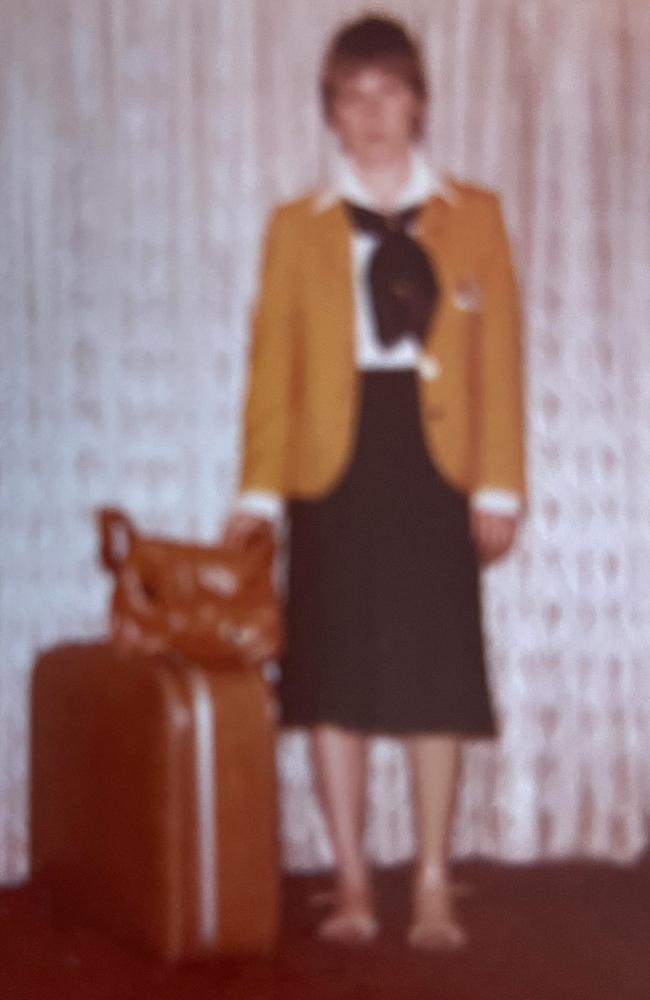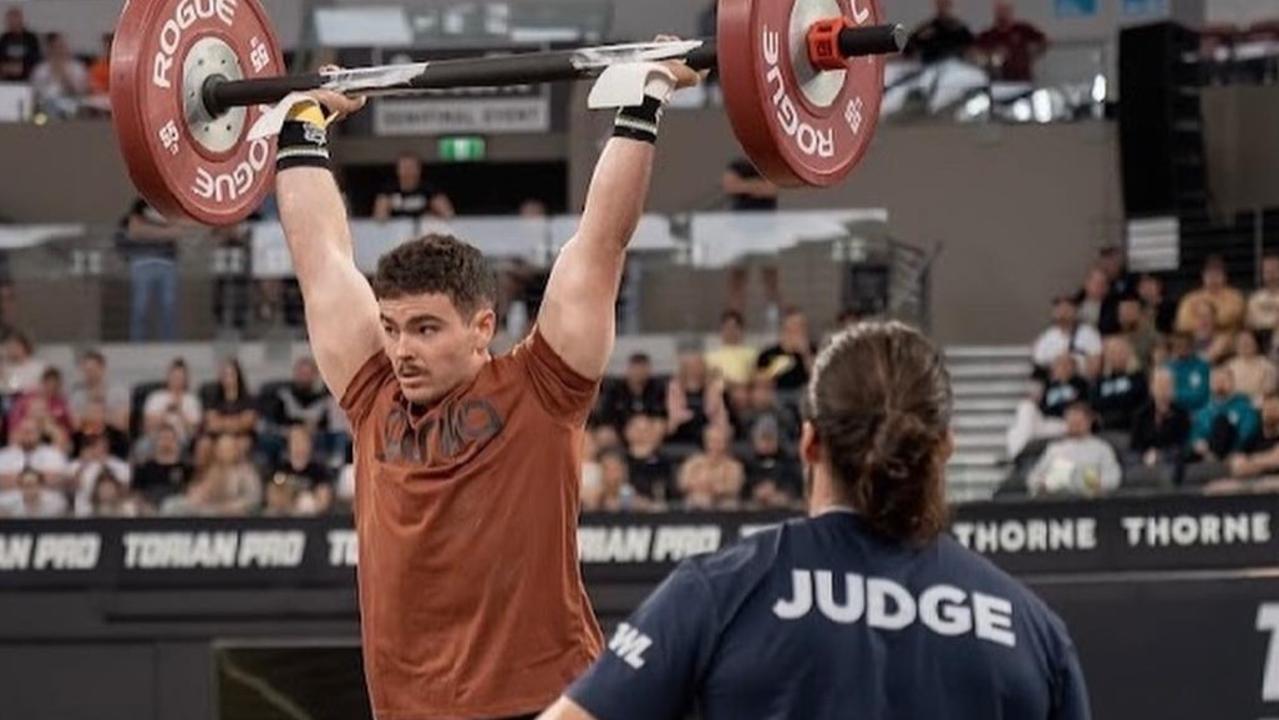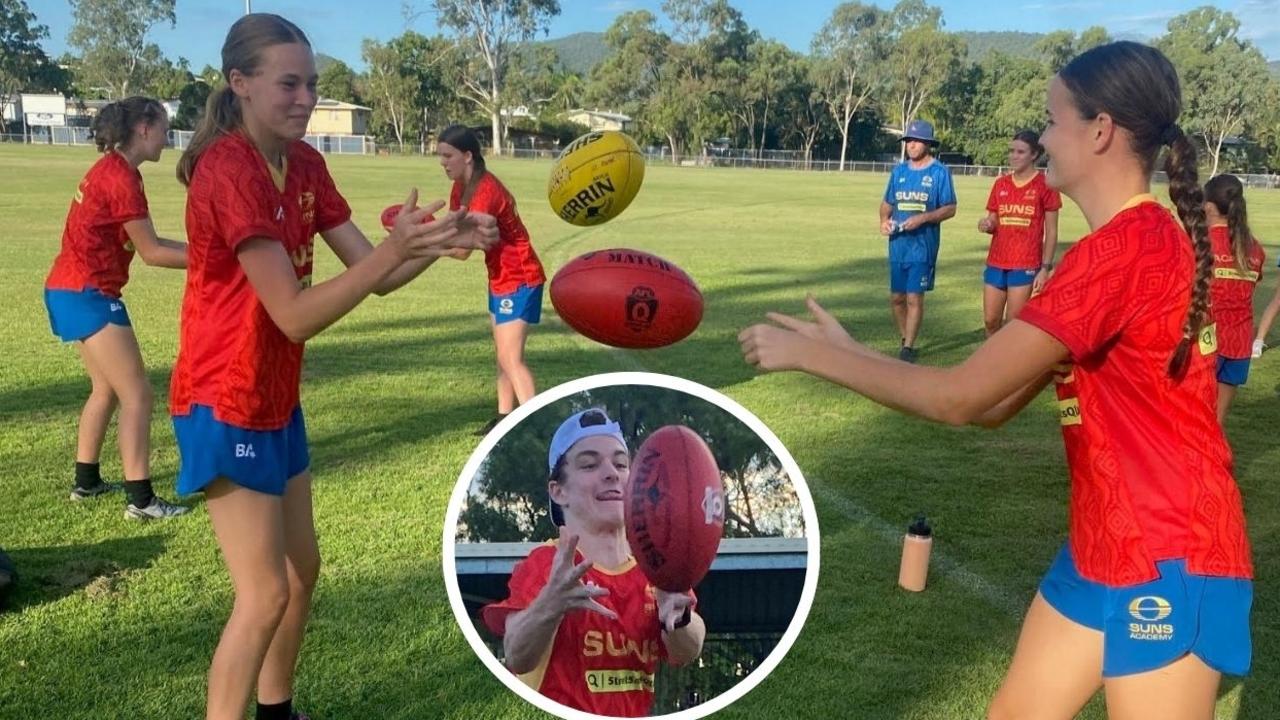Amputee athlete Tracy Johnson’s inspiring journey to Adaptive CrossFit Games
She used to be subject to nasty bets but it only fueled this inspiring Aussie woman to greater heights.

Sport
Don't miss out on the headlines from Sport. Followed categories will be added to My News.
It was 1975 when Myles and Merla Grundon were faced with an agonising decision.
They had to give doctors the authority to amputate their eight-year-old daughter’s lower leg.
An orthopaedic surgeon recommended the life-changing procedure after baby Tracy was born with one leg shorter than the other.
The recovery and reconciling the loss was a “long arduous process” but incredibly, it failed to suppress the schoolgirl’s fervour for life and ironically, a willingness to “jump into everything”.
Tracy (now Johnson) learned to embrace her disability through sport.

She swam for Australia at age 14 in the FESPIC Games (the precursor to the Paralympics) and, in a matter of days, the Central Queensland athlete will again represent her country – this time at the Adaptive CrossFit Games in the United States.
“I think sport makes things easier for you,” Tracy said.
“I never really considered myself competitive until someone actually described me that way.
“I’ve always thought that I don’t compete against other people but I do compete against myself.”
There was never an explanation offered as to Tracy’s leg length discrepancy.
“It had a little foot on it that never grew, it only got to a one-year-old size,” Tracy said.
‘WHAT A DECISION TO HAVE TO MAKE’
“I used to wear a boot with iron bars down the side. It was very, very heavy and to be able to carry it, I had to throw my hip.
“We saw this orthopaedic (surgeon) and he said she’s either going to end up with a permanently dislocated hip or we can cut it off.
“I just think ‘My God, what a decision to have to make as parents’.”
Tracy had the surgery in Toowoomba on December 10, 1975, the day of her brother’s 10th birthday.
“I was really happy about it because I got to go to Myer to buy all this stuff to go into the hospital with,” she said.

“I felt like I was the one getting all the presents.”
Tracy was in hospital for months and on crutches for six more, sporting a large bandage, before “they put the leg on”.
She remembers it was a far cry from the lightweight and flexible prosthesis she wears today.
“I used to have to strap it on. You would have a velcro strap around the back of your leg the whole time, and it was constantly rubbing and hurting.
‘YOU WOULD JUST GO CLUNK, CLUNK, CLUNK’
“The inside was like a bit of foam, the leg was fibreglass and the feet were timber so you would just go clunk, clunk, clunk.
“You were back and forth to Brisbane and they would stick a bit of timber between the foot and the bottom of the leg and shape it to help keep up with your growing.
“Now, it’s all biomechanics and they can whip things up very easily.
“You don’t wear a strap at all, there’s no wear and tear on your leg, and it’s silicone and the feet are blades that spring you forward.”
Tracy said she often looks at the “old legs” and marvels at the advancements that have been made.
She admits it was challenging in the days immediately after the amputation.
“It was hard at school because I couldn’t do anything. I was just left sitting there watching everybody play and do all these things,” she said.
“I had to sit on the sidelines, which wasn’t great.
“At least when I got the leg, I could pretend that I was joining in.”
Joining in was something Tracy quickly learned to do and she took part in anything she could.
But swimming proved to be her calling and she went on to win gold for Australia at the FESPIC Games in Hong Kong.
Tracy said while she did everything she could to fit in, it was not always easy.
“I’m probably so lucky we didn’t have social media because you’d go home and you didn’t have to worry about what was happening once you were there,” she said.
“Everyone was usually so nice and kind but then becoming a teenager, sometimes you could end up being the butt of the joke.
“If someone took you out, you would find out later that you were ‘the bet’.
“Those things were really hurtful but what do you do? As a ‘70s kid, you just got on with it.
“I was never indulged as far as feeling sorry for myself.

“If you had a moment, it had to be a pretty private one, and you just had to get on with it because nobody was coming to save you.”
It is that approach that has helped Tracy become the strong and capable woman she is but there’s one thing she can’t cop.
“I struggle with the saying that your disability doesn’t define you. It does, of course it does. It’s okay for you to sit there with all your body parts and tell me that.
“I definitely would be a different person if I had two proper legs because things would have been different.
“But equally, having the amputation opened up pathways that never would have opened up for me otherwise.
“I went over to Hong Kong and swam for Australia and got gold medals.
“I never would have had that opportunity if I had two legs because I never would have been good enough.”
Tracy is understandably excited for her next opportunity, which comes in the form of the Adaptive World Games in San Antonio, Texas, from September 19 to 22.
She is currently ranked third in the world and said it was unbelievable to have progressed through the qualifying rounds.
“I’m overwhelmed that I did so well because they don’t have age divisions in the adaptive games so I’m up against 20, 30-year-olds,” she said.
“I’m so excited and ready to make the most of it.”
‘YOU’VE JUST GOT TO GET UP AND KEEP GOING’
Tracy was introduced to CrossFit by a family member about 10 years ago.
She loves it because it allows her to compete alongside able-bodied athletes and to personalise her own workouts and the intensity of them.
She’s in the gym four hours each weekday and the physical challenge of farm work substitute for training on weekends.
Tracy cannot speak highly enough of her coach Jake Standen, who has helped her reach elite level status as an athlete.

Her involvement in CrossFit stems from her desire to always maintain a healthy lifestyle.
“I used to work in a nursing home and you would be lifting people off their lounge chairs into their beds,” Tracy said.
“That really entrenched in me that mobility is everything; you’ve just gotta get up and keep going.
“You don’t have to do CrossFit every day – just do something.
“You’ve got to put the work in, you’ve got to do it for yourself, no one else can do it for you.”
Tracy said the support she had received from her cheer squad at CrossFit CQ, led by Kim Kekewick, her workplace and the broader community was mind-blowing.
“I wasn’t expecting it but I am so grateful and so appreciative,” she said.
Tracy said she could not do what she was doing without the unconditional support of her husband Sean and family.
Sons Tom and Jack will make the journey to Texas to support their mum, who has vowed to do her “absolute best” at the games.
A fundraising page set up by Kim has raised more than $6000 for the American trip.
“If I got a podium finish that would be absolutely amazing, that would be the pinnacle, and that would be a good way to retire from competitive CrossFit,” she said.
“But just to go and mix it up with the superstars over there, I’ll be really, really happy with that.”





